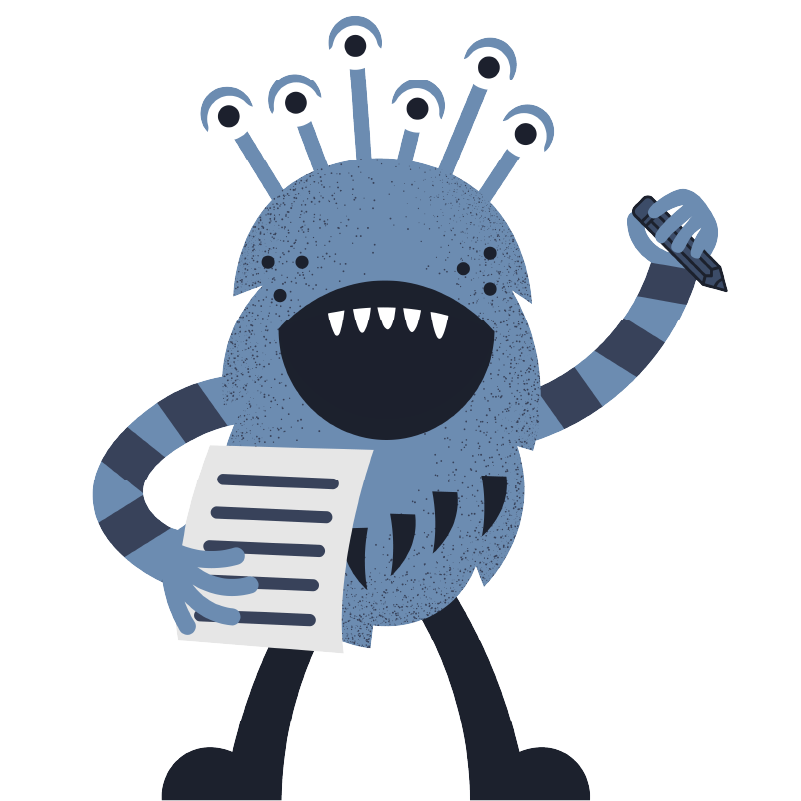Mathematics
for 6th Grade Students
6th grade students will spend most of their time learning the following topics. They should understand them well by the end of the year.
Tip: Hover over icons to see definitions of key terms.
This is an example tooltip!

Expectations for Students
By the end of the year 6th grade students should know:
Learning 6th Grade Mathematics
Add, subtract, multiply & divide with big numbers & decimals quickly.
Find common factors & multiples of whole numbers quickly.
Understand ratios & rates, & solve problems involving proportional relationships.
If it took 7 hours to mow 4 lawns, how many lawns could be mowed in 35 hours?
Solve problems involving percentages. Find the part when given the whole & the percentage.
Would you prefer 33% of a $100 prize or 75% of a $50 prize?
Multiply & divide fractions. Calculate equivalent fractions, decimals, & percents.
Understand absolute values . Be able to put the absolute value of positive & negative numbers in order.
Read, write, & rearrange expressions using order of operations & basic properties of algebra.
24x + 18y can be rewritten as 6(4x + 3y)
y + y + y can be rewritten as 3y
Use variables to stand for quantities. Write equations & inequalities to solve word problems & describe relationships between variables.
A farmer uses a tractor to plant corn quickly in the springtime. The farmer plants 216 acres every 12 hours. Write an equation for the number of acres the farmer plants in “n” hours.
Solve simple equations with one unknown quantity or variable.
7x = 22 then x = ?
Find area, surface area, & volume of 2D & 3D shapes. Explain the formulas used.
Develop understanding of statistics. Determine & interpret measures of center (including mean, median, & mode) & measures of variability (including range). Select the right measures to use to solve a question.
6th Grade Math Examples
Sidebar Tooltip
There are 24 adults and 30 children at a science museum. What is the ratio of children to total people at the science museum?
5 : 9
Brennan is b years old. Shin is 1 year less than 2 times Brennan’s age. Marcos is 1 year less than 3 times Brennan’s age. The sum of the ages for all 3 boys is 22. Which equation shows this situation?
6b – 2 = 22
A study showed that the ratio of the number of people who get their news from social media to the number of people who get their news from other sources is 3:7.
270
It takes Mildred about 3 minutes to walk 2 blocks. A point has been plotted in the coordinate plane to show this situation.
a.) Plot a second point that represents an equivalent ratio.
b.) Explain what the coordinates of the point you plotted represent.
Answers may vary, points (1.5, 1), (6,4), and (9,6) are all equivalent
Answers may vary, points (6, 4) represents Mildred walking 4 blocks in 6 minutes
A store has two different sizes of ice cream. The smaller
container costs $3.87 for 48 ounces. The larger container costs $6.42 for 128 ounces. Which ice cream costs less per ounce? Explain your answer using numbers, words, and/or pictures.
The larger container costs less per ounce
462.8 + 1/5 = ?
463
Jenna’s family is going on a trip to visit relatives.
- After driving 72 miles, they used 3.2 gallons of gas.
- Her family has 850 miles remaining on their road trip.
- The gas tank in their car can hold 15 gallons.
They filled the gas tank at the start of the road trip. They plan to only stop to fill up when their gas tank nears empty. There are plenty of gas stations along their route.
How many additional stops for gas will Jenna’s family need to make to get to their destination? Explain your answer using numbers, words, and/or pictures.
Number of additional stops ~1.516, since we can’t have a fraction of a stop, we must round up. Jenna’s family will need to make 2 additional stops for gas to reach their destination.
A water tank shaped like a rectangular prism is 78 inches tall, 66 inches wide, and 2 feet long. A cubic foot of water weighs approximately 62.43 pounds. What is the weight of the water the tank can hold when it is full?
4463.745 pounds
Example Tooltip
Example Tooltip
Everyday Activities to Support Learning
Tips for Talking to Teachers
A strong relationship between families and teachers is key to ensuring students have what they need to succeed. Parent involvement not only leads to higher grades and test scores, but also helps students develop self-confidence, motivation, and social skills. Knowing what questions to ask at school visits and parent-teacher conferences can help you feel confident when it comes to addressing your child’s’ academic needs.

